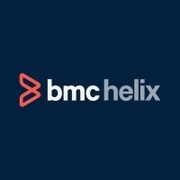
Best IT Asset Management Software 2025
IT asset management (also hardware asset management or HAM) software manages the physical assets in an IT infrastructure (their selection, maintenance, protection, inspection, and renewal or disposal/replacement). The purpose of the software is to ease and improve the lifecycle management process of the IT infrastructure and inform strategic decisions related to it its growth and maintenance. To that end vendors of asset management tools proffer inventory control with related functions like ...
We’ve collected videos, features, and capabilities below. Take me there.
All Products
Videos for IT Asset Management
Learn More about IT Asset Management Software
What is IT Asset Management (ITAM) Software?
IT asset management software is designed to inventory all the hardware and software within an organization to aid decision-making regarding hardware and software purchases and redistribution across business units. IT asset management software is used most broadly by larger organizations and enterprises, but can provide value across company sizes.
IT asset management tools centralize the asset management process for IT departments. This centralization creates efficiencies within policy management and IT inventory management. ITAM also allows businesses to maintain license compliance while reducing IT waste from unnecessary hardware and software licenses.
IT asset management can manage the life cycles of a wide range of business assets, including:
Infrastructure hardware, including network devices, servers, and security technology
3rd party infrastructure, such as cloud databases
Software licenses
Company-owned personal devices, such as laptops or phones
IoT devices
IT Asset Management vs. Help Desk
IT asset management can overlap heavily with other IT support-related functions. The most common overlaps are with IT Service Management and Help Desk software. ITAM is considered by some to be a subfunction of IT Service Management.
IT asset management is often required in help desk functions. For instance, help desk tickets to requisition hardware, software licenses, or request tech maintenance can all lean on asset management capabilities. Help desk software will sometimes include asset management to serve this need.
IT asset management is much more specialized than help desk software. Help desk products are generalizable to business-wide service needs. In contrast, IT asset management focuses on specific classes of assets. Other systems like help desk software will often integrate with IT asset management tools to create a more comprehensive and efficient internal service or support experience.
IT Asset Management Features & Capabilities
Typical capabilities of IT Asset management software are:
Discovery and management of hardware and software inventory
Lifecycle monitoring from acquisition to retirement
Upgrade cycle management
Asset detail drill-down
Enduring license agreement compliance
Configuration management database for recording all asset data
Purchase order and contract management
Typically, inventory, financial and contractual data is discovered and maintained in a central repository. This helps with monitoring assets throughout their entire lifecycle. Requests to purchase assets are handled through approval workflows. The software handles acquisition details such as entitlement, chargebacks, and provisioning. Post-deployment, all maintenance activity is recorded and audits are performed until assets are retired from service.
IT Asset Management Software Comparison
When comparing IT asset management software, consider these factors:
Asset management vs. full IT Service Management: Most IT asset management capabilities are found within comprehensive service management platforms. Most organizations that require asset management will also need broader service management functions, such as knowledge management and change management. However, these additional services also bring additional cost- asset management is the primary consideration, a point solution may serve your needs more efficiently.
Scalability: Many IT asset management processes apply to dozens, hundred, or even thousands of entities, oftentime simultaneously. Evaluate the size of your IT asset pool, and its potential to grow, and factor in products’ ability to automate certain mass actions, such as applying updates, tracking licenses, and routing user requests.
- Reporting: Reviewers frequently point to reporting as an issue when using ITAM products. To mitigate this issue, consider what aspects of your IT asset data are most important to you. Based on those priorities, consider how well ITAM products can reporting on those metrics using either prebuilt or customizable reporting.
Start an IT asset management comparison here
Pricing Information
Pricing for ITAM cloud services varies. These products are usually priced per agent per month, and there is often an additional charge per device. Enterprise-level solutions have a cost in the region of $100 per user, but SMB options can be significantly cheaper.






















